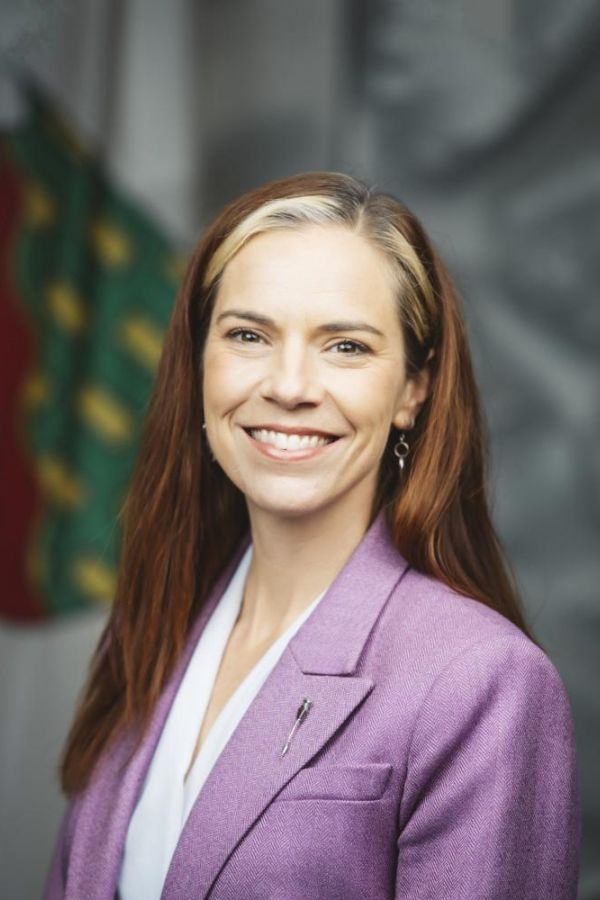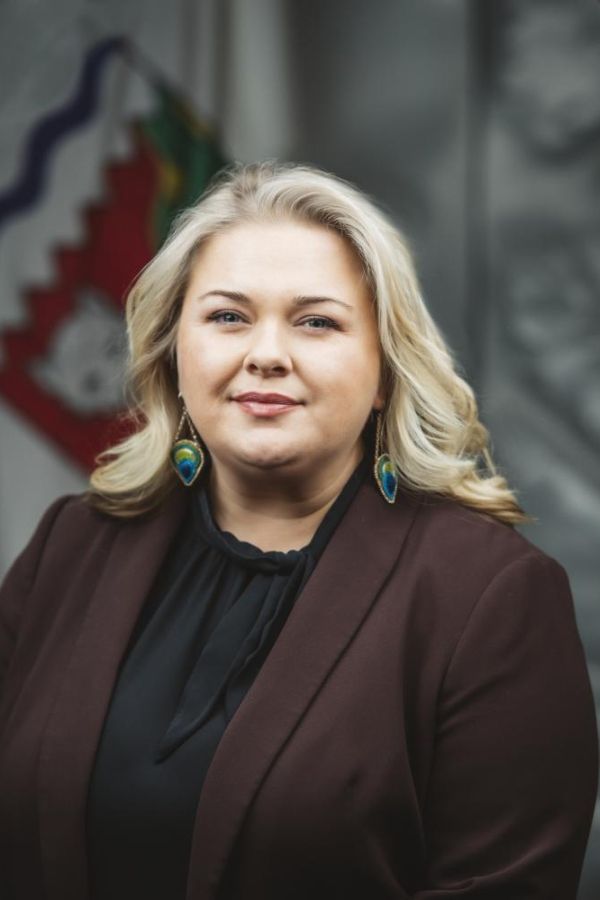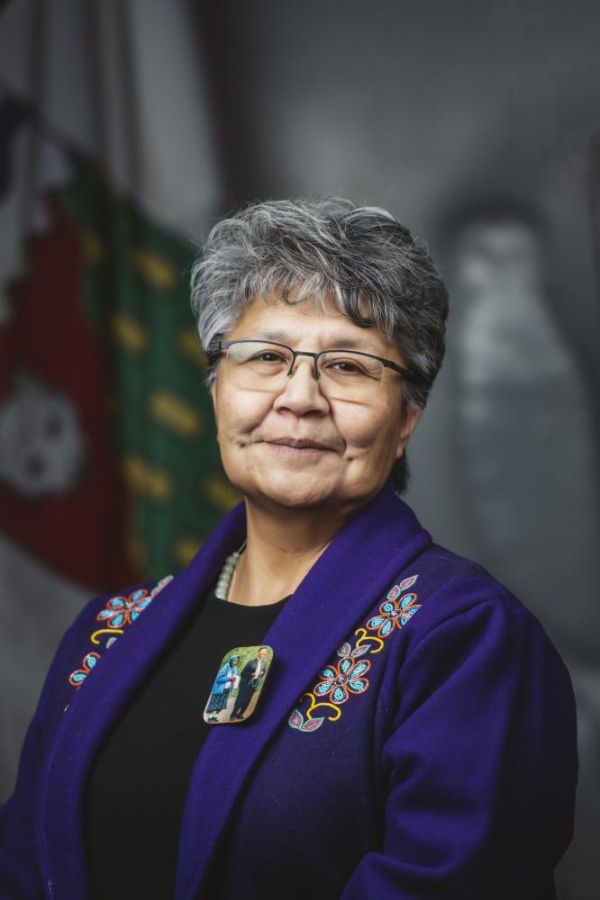
Thank you, Madam Chair. And I apologize to the Minister, but I am going to ask a little bit further along this but just because I think I have an understanding, but I want to make sure I do. And if we can't answer it here, I'd welcome the briefing and maybe it'll direct some of that, how that briefing going.
So in the past, we've seen amortization of of assets that have been accounted for. And now from what I can gather, you're saying is this amount is the extra amount, like technically sort of the amortization if we knew that we were going to have to pay for the removal of asbestos, etcetera when we first set the amounts.
So to me, I'm curious if this is right, that this is the adjustment for what we now see in the scientific world as liabilities that we didn't know 20 years ago were going to be liabilities so that, you know, municipalities and governments cannot get behind so far that they don't have the money there, or they're not already preparing.
So this to me, seems to just be a proactive accounting number in order to say, governments, you need to start thinking about these extra liabilities that are already being somewhat accounted for in amortization but not fully. Thank you.

Thank you. Minister.

Madam Chair, that sounds pretty good. I'm going to go with 'yes', thanks.

Thank you. Member for Great Slave.

I'm going to look at Hansard so even I can remember what I just said.
So I guess my question is around and I get that this might be department by department, but around the derivative of this number.
So to me, there are already projects and certain assets that we have that are already being handled by different accounting areas of our budget. So this is just all the incidental extras that were not maybe accounted for. So, for example, contaminated sites were brought up. Well, a lot of those would be accounted for under federal funding, under other pots, Infrastructure, ENR is dealing with them in different ways.
So is it fair to say that this $70 million is all those additional small items that the government has not, in the past, accounted for, that they're perhaps, with respect to my colleagues' questions, they may have already been in the budget areas that we're accounting for the liabilities with our other assets, in the past. Thank you.

Minister.

Thank you, Madam Chair. Madam Chair, I wish I could just go "yeah," again. Not quite.
Contaminated sites, for example, are accounted for differently. I think other it's just that yeah, and maybe that actually does go to the it does go to some of the questions that the MLA for Frame Lake was asking, is that there are different standards that attach to different sites depending on the nature of the site. But here what we have is just, you know, assets that didn't previously have accounted for the fact that there's a legal liability at some point to, you know, retire the asset.
So this is now meant to capture that and just the value that is reflected in the budget for the fact that the government has an asset that has a different actual value associated to it given the cost associated when it's comes to its end of life.
So accounting adjustment, yeah, but not it's not that it's only to certain types, if I was understanding that correctly. Thanks.

Thank you. Member.

Thank you. I actually do think I understand what this is. So I do really appreciate that.
I guess my next question, then, and again it could be something for the briefing or in the detailed dive with the departments but is how much validity or certainty is there around this number?
So, for example, using your own example of asbestos, oftentimes when the government is dealing with the decommissioning of a building, they don't know what they have until there's a time that they come into that building and start assessing it. And as any consultant in the environmental world will tell you, and that's why we love to caveat our reports, is that there are unknown conditions and therefore they those types of projects can really spiral.
So I guess I'm just curious to know and I don't need to know today, but what is the certainty of this number, really, when we look at the uncertainty in assessing environmental issues and liabilities. Thank you.

Thank you, Member. Minister.

Thank you, Madam Chair. I don't have sort of a percentage of accuracy in my information in front of me. I think this is probably best answered by having the folks in the room doing a briefing. But if I can just turn it over to the deputy minister, maybe he has a sense from the team as to their level of certainty or comfort with this number. Thanks.

Thank you. Deputy minister MacKay.
Thank you, Madam Chair. So this was calculated in coordination with departments. And the way it was calculated was we determined if there was a legal liability that arose during the lifespan of the asset that would require expenses, then that would be added to the expense that was recorded at that time for the acquisition of the capital asset.
So just as an example that we used in the letter to committee was an asbestos. So if at a certain point, an existing building like the Laing Building or whatever was it was determined that (a) there was asbestos in it and then (b) a regulation had been implemented not allowing asbestos to be used and for it to be cleaned up in a certain manner, well, we know how much it costs to clean up asbestos so the cost of that liability, as it would have been in at the time that the liability was incurred, would be recorded retroactively and then brought forward to today's date. So that's how we and we we did an example like that in the letter to standing committee. So that's how it was calculated.
In as far as other environmental liabilities, like a contaminated site or something like that, we do have accounting standards for that but that's not dealing with this. This is the retirement of assets and how they're calculated so we're changing how the retirement of asset retirement obligations are calculated basically.
So overall that's about a $70 million retroactive expense for the government, and then as the Minister mentioned, $8 million expense going forward.
So that's not exactly money we will be spending, but it will be recorded as an expense. So in a way, it will limit what the government can spend but it it's not money we have to find, so to speak. So hopefully that explains that. Thank you.

Thank you. Member for Great Slave.

Thank you, yeah, that does explain it. So I appreciate that.
I guess, then, my question is when do we recalculate that $8 million a year? Is that expected to be a changing number, or is that literally just to keep us on track with where we're going? And then as we add more assets, yes, will that number change. Thank you.

Thank you. Minister.

Madam Chair, let's send that one over to the deputy minister, please.

Deputy minister Mackay.
Thank you, Madam Chair. So the expense will remain, what was calculated, using a percentage of the accretion and amortization of the asset as it goes through its lifespan. So that will change somewhat over time.
But so if you look at the example of the building with the asbestos that we gave you, the ongoing expense is calculated as at $51,000 for that asset as going forward as an expense that will be calculated. And then if you add up all the assets together, that's $8 million. Thank you.

Thank you. Member for Thebacha.

Thank you, Madam Chair. So our November 12th briefing, I was the one who asked the question and we got an answer on November the 22nd that was addressed to my colleague here, the chair of the Standing Committee on Accountability and Oversight. And I had asked the question to do it by community, and you've done that on attachment 3.
And it shows the number of assets and the amounts by community. And usually what happens in the public accounts is that a standard formula is usually used by an accountant to overall, and in order to balance the public accounts for to meet these public account standards.
I mean it's it's a very simple we're going to so much here comparing apples to oranges when you're going into environmental sites and stuff like that when it's this is not has nothing to do with it.
I don't know why if you just read this document, it's very clear to me exactly what it is. And making sure that we don't account to the public that we're doing this is the way it has to be done, legally. And we're not talking about environmental sites and we're not talking about all these other things that are under federal jurisdiction. And in order to balance the public accounts, this is one of the standards they're asking for now and that's what we're doing. And it's very clear to me now, because I was the one who asked that question on November the 12th, and I was satisfied with the answer. That's why I wasn't going to ask I'm not asking any questions on it. Thank you, Madam Chair.

Thank you, Member for Thebacha. There are no questions in there. So we'll move on.
Any other further comments/questions under this section? Seeing none, we're going to call page.
Finance, office of the Comptroller General, $71,650,000. Does committee agree?
Agreed.

Thank you, committee. Please turn now to the departmental summary found on page 26.
Finance, 20222023 Capital Estimates, $79,849,000. Does committee agree? Does committee agree that consideration of Department of Finance is now complete?
Agreed.

Thank you, Ministers. Sergeantatarms, you may escort the witnesses out of the Chamber.
Committee, we'll take a five minute break so that the Minister of ITI can get her witnesses.

I will now call Committee of Whole back to order.
Committee have agreed to review the Department of Industry, Tourism and Investment next. Does the Minister wish to bring witnesses into the Chamber?

[Audio] Madam Chair.

Sergeant-at-arms, please escort the witnesses into the Chamber.
Will the Minister please introduce her witnesses.

Thank you, Madam Chair. Madam Chair, on your right is Pamela Strand, deputy minister for Industry, Tourism and Investment. And on your left is Nina Salvador who is the director of finance and administration.

The committee has agreed to forego general comments. Is committee agreed to the proceed to the detailed contained in the tabled document?
Committee, the Department of Industry, Tourism and Investment begins on page 40. We will defer the departmental totals and review the estimates by activity summary beginning on page 41 with economic diversification and business support with information on page 42. Questions. Member for Hay River South.

Thank you, Madam Chair. First of all, I'm pleased to see that the construction for the fish plant has started, and I expect, I guess, it will be done next year. I guess what I would like to know is the initial cost of the plant -- I can't remember exactly what it was. But will there be any overruns in that? Are we looking at additional costs above what the contractor initially provided? Thank you.

Thank you. Minister of ITI.

Thank you, Madam Chair. Madam Chair, I'm not aware that there's been any additional costs at this point. Let me just turn quickly to Ms. Salvador and see if there's anything that's late breaking that I'm not aware of, please.

Thank you. Ms. Salvador.
Thank you, Madam Speaker. Yes, there is a shortfall that was indicated by Department of Infrastructure to our department, and it's $1.325 million that is a shortfall based on the supply constraints from COVID and some winter construction costs that should be added to the original budget which is $17 million.

Thank you. Member for Hay River South.

Thank you, Madam Chair. Yeah, I guess it's surprising that we have an additional cost of that amount. You know, considering that my understanding was the contract was let and agreed to based on the fact that it would probably go during the winter, and I think we had COVID already in place.
So I'm not sure what was missed there. And I would, I guess, ask where that extra money will come from to cover those additional costs. Thank you.

Minister of Finance.

Thank you, Madam Chair. Madam Chair, yes, I did forget that there were cost changes as a result of partly COVID-19, partly supply chain, one impacting the other. And of course those are estimates. They may well turn out not to be as high as anticipated.
I know that there has been funding identified thus far from projects that aren't advancing -- are not advancing as quickly as anticipated. I don't have the specifics on that at -- handy, but on those specific projects, I think, again, Ms. Salvador, I suspect will know exactly which projects that are seeing the transfer of funds to meet that additional cost.

Thank you. Ms. Salvador.
Thank you, Madam chair. So we have gone through our 2021-2022 capital projects, and we have reallocated some projects, some from our Deh Cho parks projects, some from South Slave, and a couple from the Inuvik area. And we have sent the letters to the corresponding MLAs to let them know about our intention of reallocating the funds from these parks projects to the fish plant project in order to cover the escalation costs. Thank you, Madam Chair.

Thank you. Member for Hay River South.

Thank you, Madam Chair. So I guess I would ask is that those projects that -- are they being deferred, or are they not going to happen at all? Are we looking at putting that money back in, because I think there was a building there for Hay River that I'm concerned about and knowing the state of the existing one. Thank you.

Thank you. Minister of ITI.

Thank you, Madam Chair. So, you know, always coming with the caveat that circumstances can change at this point, certainly the letters that I've seen come across to date have spoken to deferrals of projects, delays of projects. And in some cases, those projects weren't necessarily at an advanced stage where they were proceeding. And there's other occasions -- that's right, there's some of the projects also had surpluses on them and so we were able to take the surplus from a project to put it towards this.
So, I mean, I don't want it to sound like we're cobbling the money together but in some ways we sort of are, but it's a good news story in that, you know, the amount that was needed, the extra amount that was needed to cover the unanticipated higher supply costs is right now able to be covered through, again, either the surpluses or through projects that were not at the same stage of readiness to advance. Thank you, Madam Chair.

Thank you. Member for Hay River South.

Thank you, Madam Chair. And, you know, knowing the original costs and the additional cost, I would like to know is in terms of when the plant is up and running, are costs for this project -- does it include the initial start-up and some management costs for employees and that. Thank you.

Thank you. Minister.

Thank you, Madam Chair. Madam Chair, this is in the operations budget that -- for ITI initially and then ultimately, again, the vision here is that it's going to be taken over in due course. So the money that's being seen here is part of the capital plan is just that, it's to build it. Thank you, Madam Chair.






